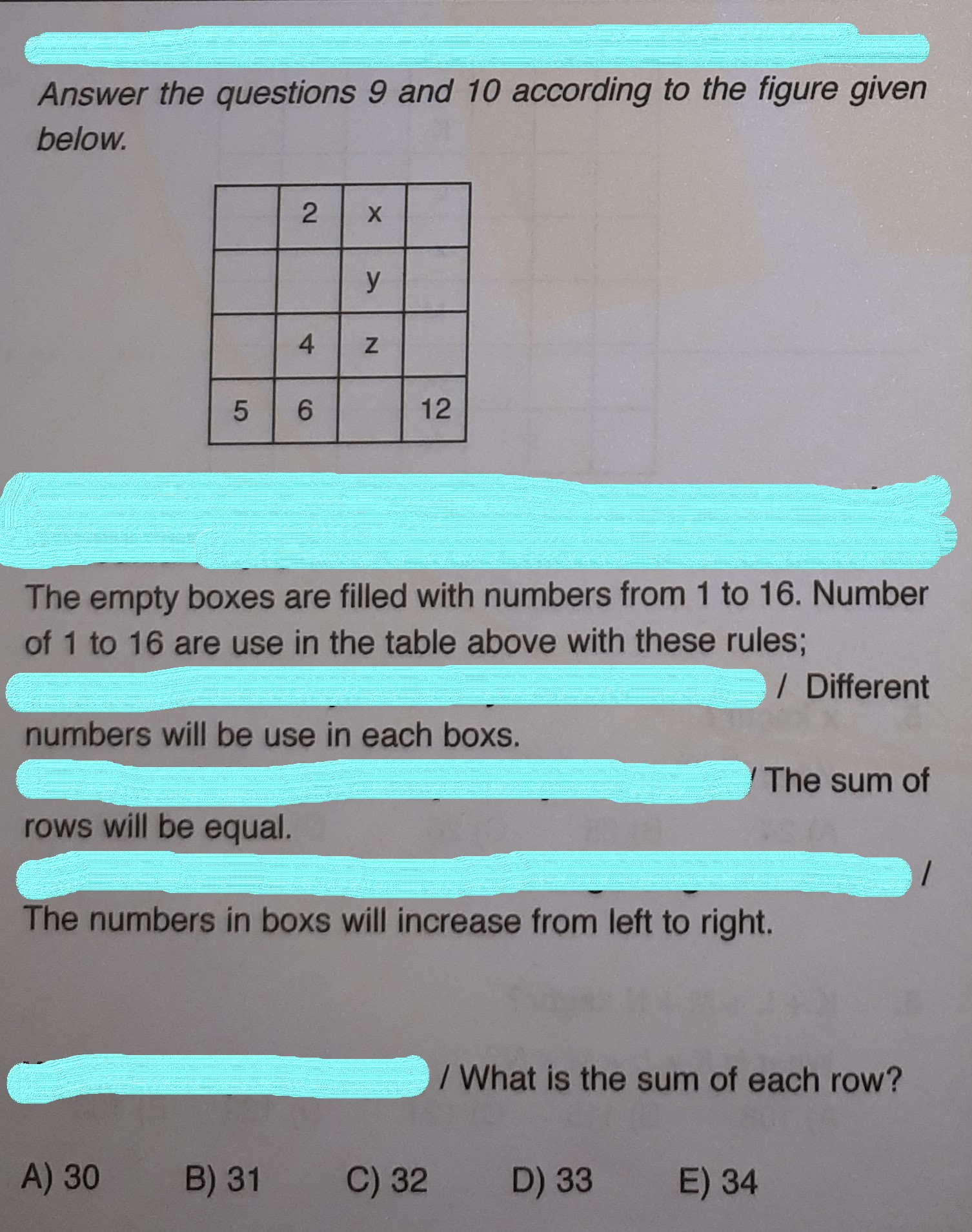4 what is the answer and how ?

1 Answer
E 34
Explanation:
We have:
with each row being equal and the numbers 1-16 increasing from left to right and no number repeated.
We can place 1 to the left of 2. We can place 3 to the left of 4.
In the bottom row there is a blank between 6 and 12. Let's drop a value in there for now - say 10 - which gives a rough estimate to the sum of the rows to be 33.
The top row is currently summing to 3 and so we need 30, which is 14 and 16:
The third row sums to 7, meaning we need 26, which is 15 and 11:
We're left with
We need to increase the first three rows we did by 1 each and decrease that last row by 3, so we'll have sums of 34.
~~~~~
As an extra exercise, let's get the box filled out. In the bottom row, trade the 10 out for the 11.
Then in the top row trade out the 14 for the 15:
Lastly swap the 10 and 13:

